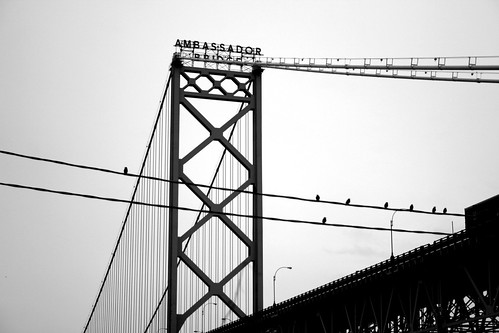When is the last time you were in Detroit? What do you think should be done? If you've never been to Detroit, what impression do you have of the city?
 |
| Ambassador Bridge |
 |
| Train Tracks in River Rouge |
 |
| Rubble |
 |
| Brush Street |
 |
| Brush Street - NOBODY |
 |
| Tire and Garbage near Ambassador Bridge |




One of the main reasons you don't see such complete abandonment of the inner city by the middle class in other developed countries is that there are strict limits on suburban development. In Ontario, Canada, for instance, a local government must abide by provincial law that regulates how many greenfield homes it can approve. If the population isn't growing, it can't allow big new suburban developments. There is no ghetto in Toronto because the artificial scarcity of land for housing makes it too valuable to allow to decay. (Local governments are required to plan for new homes as the population grows to keep housing costs from getting out of hand.)
ReplyDeleteIf we think of American inner cities that have managed to keep a good amount of middle class residents -- New York, Pittsburgh and San Francisco come to mind -- one of the big factors is that there are geographical barriers that make it hard for people to commute from too far away. Say what you want about Harlem -- at least a lot of people still live there. Manhattan land is just too valuable to be abandoned.
What areas like Detroit need to do is establish artificial, legal barriers to urban sprawl. Detroit has an oversupply of housing, yet it is much easier for homebuilders to build on greenfield sites than to redevelop brownfields. Banning residential construction on greenfield sites until the middle of the metro area gets repopulated wouldn't solve the cultural and social problems that led to middle-class flight, but it would eventually force developers to rebuild in the city.
The problem is that there is no level of government that can do that in Michigan. Urban planning is considered a strictly local concern in most of the US, but the Detroit area encompasses several counties and dozens of cities. If the state of Michigan doesn't want to take these kinds of steps itself, it needs to set up a regional government for the southeastern part of the state with the capacity to limit development in rural areas.